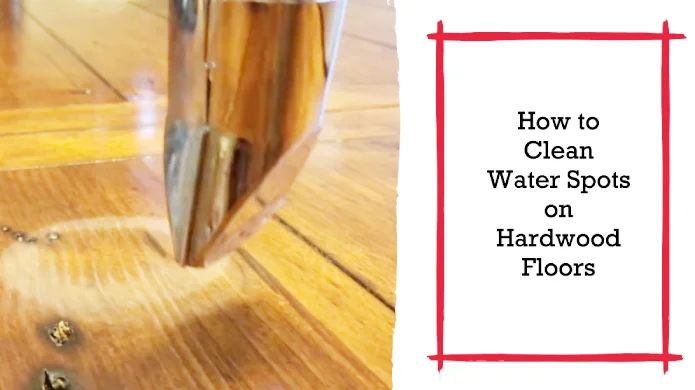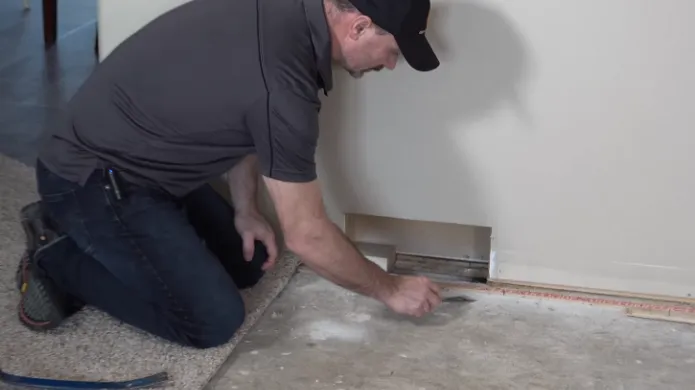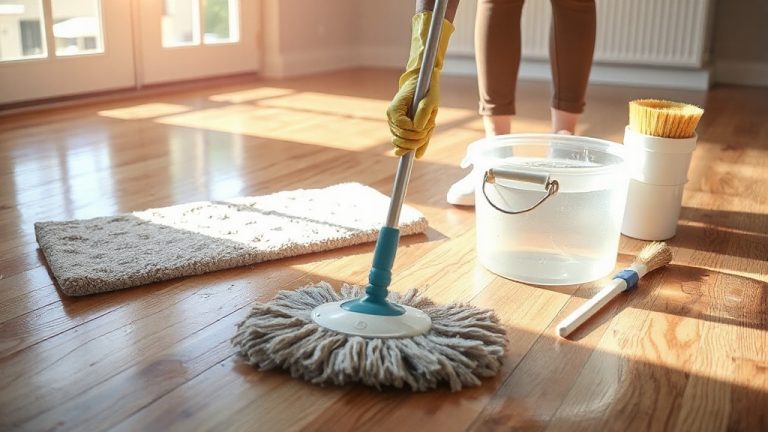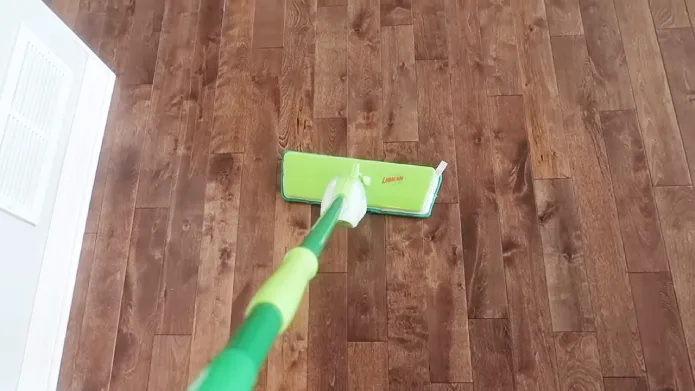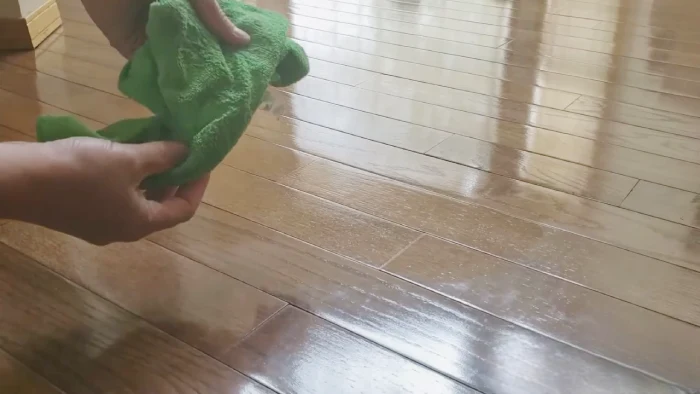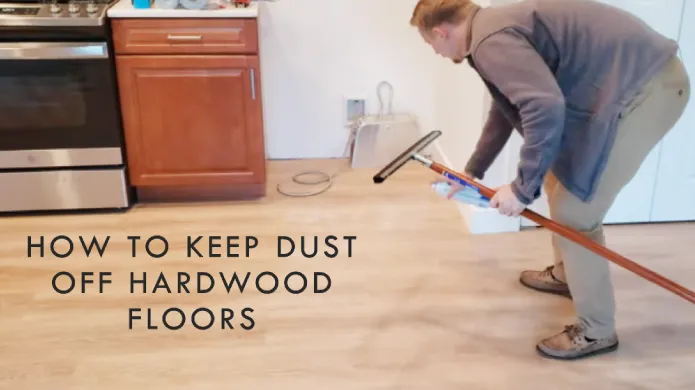How Do You Clean Engineered Hardwood: Daily Dirt Defense
To clean engineered hardwood, sweep or vacuum daily with a soft brush to avoid scratches. Mop weekly using a damp microfiber mop and pH-neutral, wood-safe cleaner never soak the floor or use harsh chemicals.
Wipe spills immediately with a dry cloth to prevent moisture damage. Use furniture pads and rugs to protect high-traffic areas. Avoid steam cleaners and abrasive tools to maintain the finish.
Keep humidity stable and promptly address stains for long-lasting beauty. You can explore more detailed care techniques next.
Key Takeaways
- Sweep or vacuum daily using soft-bristled tools to remove dirt and prevent scratches on engineered hardwood floors.
- Mop weekly with a damp microfiber mop and pH-neutral hardwood cleaner, avoiding excess water and steam cleaners.
- Immediately blot spills with a dry or slightly damp cloth to prevent moisture damage and warping.
- Use felt pads under furniture legs and area rugs at entryways to minimize wear and surface damage.
- Maintain indoor humidity between 45-55% and avoid harsh chemicals to preserve floor finish and prevent warping.
Daily Cleaning Practices for Engineered Hardwood
When you clean engineered hardwood daily, you protect its finish and structural integrity by removing abrasive particles before they cause damage. Start by sweeping high-traffic areas with a soft-bristled broom to avoid scratching the surface, while low-traffic zones can be swept weekly.
Complement this with vacuuming using a hardwood floor attachment or a soft brush, ensuring you avoid hard rolling brushes that can damage the finish. Managing moisture is critical: use a dry mop or a lightly damp cloth for spills and dry immediately to prevent warping.
Prevent scratches by placing rugs at entry points, using felt pads under furniture, and keeping pet claws trimmed. Finally, inspect your floors regularly for dust, spills, or damage to address issues promptly and maintain longevity. Avoid wet mopping to prevent water damage and maintain the floor’s durability.
Choosing the Right Cleaning Solutions
Although engineered hardwood floors are durable, selecting the right cleaning solutions is essential to preserving their finish and structural integrity. You must avoid harsh chemicals like ammonia and steam cleaners, which can degrade the surface.
Instead, choose pH-neutral and wood-specific cleaners to guarantee compatibility and protection. Regular maintenance with gentle methods helps maintain the floor’s longevity and appearance.
Follow these guidelines:
- Use manufacturer-recommended or proven wood floor cleaners such as Bona or Murphy Oil Soap, diluted appropriately. Selecting the right cleaning products supports effective cleaning while being gentle on the floor’s surface.
- Consider gentle homemade solutions like a vinegar-water mix, but always test in a concealed spot first.
- Avoid excessive moisture by using only damp mops, preventing water damage. Avoid steam cleaning because hot water causes warping and moisture damage.
Recommended Tools for Floor Maintenance
You’ll want to use essential cleaning tools like a soft-bristle broom, microfiber mop, and a vacuum with a hardwood setting to safeguard your engineered hardwood floors.
Essential Cleaning Tools
A set of essential cleaning tools guarantees you maintain your engineered hardwood floors effectively and safely. Choosing the right equipment minimizes damage and extends floor life.
Focus on tools designed specifically for hardwood surfaces to maximize care.
- Microfiber Mop and Cloths: These control moisture precisely and clean without scratching, preserving your floor’s finish. Their durability and washable nature make them cost-effective. Regular cleaning contributes to a newer, longer-lasting appearance by preventing surface damage. It is also important to maintain proper humidity levels to prevent wood expansion or contraction that can affect the floor’s condition.
- Vacuum Cleaner for Hardwood: Select one with a soft brush roll that removes dirt and debris without abrasion, preventing surface wear.
- pH-Neutral Hardwood Floor Cleaners: Use specialized, biodegradable solutions diluted per manufacturer guidelines to clean without stripping or dulling the finish.
Equip yourself with these to maintain your floors’ appearance and structural integrity consistently. Proper maintenance extends lifespan and is the primary factor influencing hardwood floor durability.
Avoid Abrasive Equipment
Effective maintenance of engineered hardwood floors depends heavily on selecting non-abrasive cleaning tools. You should avoid rough materials like steel wool brushes and harsh scrubbers, as these cause scratches and degrade the floor’s finish.
Instead, use soft applicators such as microfiber cloths, soft-bristle brooms, or vacuum cleaners with soft brush attachments to safely remove dust and debris while preventing damage to the surface.
When mopping, opt for a damp microfiber mop rather than a soaking wet one to prevent water damage. Also, stay clear of steam mops, which introduce excessive moisture and risk warping.
Since engineered wood is designed with a stable layered construction, it resists swelling and shrinking better than solid wood, making controlled moisture use critical to maintaining its durability (stable alternative).
Use pH-neutral or wood-safe cleaners, avoiding harsh chemicals, wax-based products, and oil soaps. By consistently employing gentle tools and controlled moisture, you’ll preserve the floor’s integrity and appearance over time, reducing the risk of surface deterioration caused by improper cleaning methods.
Common Mistakes to Avoid When Cleaning
You must avoid excessive water to prevent warping and swelling of your engineered hardwood floors.
Avoid Excess Water
Since engineered hardwood is sensitive to moisture, using excess water during cleaning can cause serious damage that’s often irreversible. Water penetrates the planks, causing swelling, warping, and finish breakdown, which compromises the flooring’s structural integrity and aesthetic appeal.
It is important to avoid excess moisture to protect both the finish and the underlying wood. To prevent this, you should:
- Use only damp microfiber mops that limit moisture exposure without soaking the surface. Maintaining indoor humidity at 45–55% helps minimize moisture fluctuations that affect the floor’s stability.
- Immediately wipe up spills to prevent absorption and staining.
- Regularly inspect seams and edges for trapped moisture, addressing any dampness promptly.
Avoid water or steam mops, saturated string mops, and soaking cloths, as these introduce excessive moisture into seams and beneath planks. Consistently adhering to moisture control prolongs your floor’s lifespan, reduces maintenance needs.
Skip Harsh Chemicals
Controlling moisture is only part of protecting engineered hardwood; chemical exposure plays an equally important role. You should avoid harsh chemicals like ammonia, wax-based cleaners, and oil soaps, as they degrade the wood’s finish and can cause discoloration or moisture issues.
These products strip protective coatings, leaving floors vulnerable to damage and reducing their lifespan and resale value. One effective homemade cleaner option is a diluted mixture of vinegar and water, which can clean and shine hardwood floors when tested for compatibility with your floor’s finish.
To further enhance protection, applying a fire retardant product can help safeguard wood surfaces from heat damage. Instead, opt for pH-neutral cleaners or plant-based soaps specifically formulated for hardwood. Dilute all cleaning solutions and test them on a small area before full application.
Using gentle, appropriate cleaners maintains your floor’s finish integrity, prevents long-term damage, and supports environmental safety. This ensures engineered hardwood stays durable and visually consistent.
Prevent Abrasive Scratches
Although engineered hardwood is durable, abrasive scratches can quickly undermine its finish and structural integrity. To prevent damage, you need to adopt careful practices regarding footwear, furniture handling, and protective materials.
First, avoid wearing high heels, sharp shoes, or heavy-soled sports shoes indoors; opt for soft slippers or remove shoes entirely to prevent dirt embedding and scratches.
Additionally, be mindful that shoes can carry debris that may scratch the surface, so regularly inspecting footwear helps minimize this risk Shoe and Footwear Considerations.
Second, use felt pads or soft polyurethane casters under furniture legs, and place rugs in high-traffic areas to distribute weight evenly and avoid pressure points.
Third, always lift furniture when moving it; dragging or dropping heavy objects risks scratching the surface. Employ furniture sliders or dollies for heavy items to minimize impact.
How to Handle Spills and Stains?
When spills occur, you must act quickly to prevent liquids from penetrating the engineered hardwood. Immediately blot the spill with a dry or slightly damp cloth avoid rubbing, which spreads stains.
Use absorbent materials like paper towels to soak up excess liquid, ensuring the cloth is well-wrung to limit moisture exposure. After blotting, dry the area thoroughly to prevent damage. Clean spills immediately to prevent water absorption and potential warping or delamination.
Using a mixture of warm water and mild dish soap can help gently clean the spill without causing further damage. Identify the stain type: pale stains usually sit on the surface, while dark ones indicate deeper penetration, needing more aggressive treatment.
For specific stains like ink or oil, apply manufacturer-recommended cleaners or specialized agents such as hydrogen peroxide. Test any cleaning method on a hidden spot first.
For stubborn stains, consider fine steel wool or light sanding followed by wax or polish to restore the finish. Immediate attention and proper cleaning techniques are essential to avoid chemical buildup that can dull or damage the floor.
Protecting Engineered Hardwood From Damage
To preserve your engineered hardwood’s appearance and durability, you should take proactive steps to prevent damage from furniture and daily use.
Start by installing felt protectors under all furniture legs to avoid scratches and indentations. Avoid dragging heavy furniture; always lift or use sliders to prevent surface gouges.
Protect your engineered hardwood by using felt pads and lifting furniture instead of dragging to prevent scratches.
Use area rugs strategically under heavy furniture to distribute weight evenly and minimize pressure points. Regular sweeping or vacuuming with a soft-bristled broom helps remove dirt and dust particles that can scratch the floor.
Additionally, maintain a stable indoor climate control humidity and temperature to prevent wood expansion and contraction that can lead to warping. Regularly inspect furniture for sharp edges and replace or smooth them as needed.
Regular cleaning, such as vacuuming weekly with a soft-bristled attachment, also helps manage dirt and particles that can scratch the floor, preserving the finish and overall appearance of your hardwood. Regular cleaning is essential for long-term maintenance.
- Apply felt pads and use proper furniture moving techniques.
- Utilize area rugs for weight distribution and high-traffic zones.
- Stabilize indoor environment to prevent wood deformation.
Best Commercial Cleaners for Engineered Hardwood
Maintaining your engineered hardwood’s integrity involves not only protecting it from physical damage but also choosing the right cleaning products.
Opt for EPA Safer Choice certified cleaners like Bona, which offer pH-neutral, residue-free formulas that preserve the floor’s finish and effectively remove stains. For example, the Bona Hardwood Floor Cleaner
Spray dissolves tough soil and shoe scuffs effectively, dries quickly without buffing, and requires no dilution, making it convenient and safe for regular use.
Murphy Oil Soap requires proper dilution to avoid residue buildup, while Weiman provides streak-free cleaning with optional polish for added shine. Method Squirt + Mop is plant-based but can leave streaks if overused, and Mr. Clean Professional delivers value with multi-surface compatibility.
When selecting a cleaning tool, consider using a microfiber spray mop, as they often provide even application and reduce waste compared to disposable options. Apply cleaners sparingly using spray bottles or damp mops, avoiding over-saturation to prevent water damage.
Prioritize products free from harsh chemicals and those with biodegradable, eco-friendly ingredients to ensure safety for pets and children while maintaining your floor’s durability and appearance.
Maintaining Floor Appearance Over Time
Although engineered hardwood is designed for durability, preserving its appearance requires consistent care tailored to its unique properties. You need to integrate routine cleaning with strategic maintenance to extend the floor’s lifespan and maintain its aesthetic appeal.
To maintain floor appearance over time, focus on these core practices:
- Routine Cleaning: Sweep daily, vacuum with a brushless tool, and mop lightly weekly using wood-safe products to prevent surface damage. It is important to sweep regularly to remove loose dirt, dust, and pet hair that can cause scratches if left unattended.
- Preventative Measures: Use area rugs at entry points, apply furniture pads, and promptly repair scratches to avoid cumulative wear.
- Environmental Control: Regulate indoor humidity and temperature, limit direct sunlight exposure, and monitor traffic to minimize stress on the flooring.
Frequently Asked Questions
Can Engineered Hardwood Be Cleaned With a Steam Mop Safely?
You shouldn’t use a steam mop on engineered hardwood because the high moisture and heat can warp or swell the layers. Steam can strip away the protective finish and penetrate the wood, causing damage.
Instead, opt for a lightly damp microfiber mop and mild, wood-safe cleaners. This approach preserves the floor’s integrity and finish while effectively cleaning without risking moisture-related harm or surface abrasion.
How Often Should Engineered Hardwood Be Professionally Refinished?
You should professionally refinish your engineered hardwood every 7-10 years in high-traffic areas and every 10-15 years in low-traffic zones. Since most floors allow 2-3 refinishes due to wear layer thickness, monitoring this layer is vital.
Regular assessments by professionals ensure you don’t sand past the plywood substrate. Proper refinishing extends lifespan, maintains appearance, and balances cost versus replacement needs effectively over 25-30 years.
Is It Safe to Use Vinegar on All Types of Engineered Hardwood Finishes?
You shouldn’t use vinegar on all engineered hardwood finishes. Its acidity can degrade protective layers, especially over time, causing etching or dullness. While some sealed floors may tolerate diluted vinegar briefly, it’s risky. Always test in a hidden spot first.
To protect your floors, opt for pH-neutral cleaners specifically designed for engineered hardwood. Avoid harsh acids like vinegar to maintain the finish’s integrity and longevity.
What Humidity Level Is Ideal for Engineered Hardwood Flooring?
Imagine your engineered hardwood flooring as a living surface, expanding and contracting subtly like breathing. You want to keep your home’s humidity between 35% and 55% relative humidity to maintain that balance.
Staying in this range prevents swelling, gaps, and warping that happen when moisture levels stray. Use a hygrometer to monitor regularly, and adjust with your HVAC or humidifiers to protect your floor’s stability and appearance over time.
Can Pets Cause Permanent Damage to Engineered Hardwood Floors?
Yes, pets can cause permanent damage to engineered hardwood floors if you’re not careful. Scratches from claws and dents from heavy paws can mar the surface. While urine accidents or moisture left untreated can seep in, causing stains, odors, or warping.
To protect your floors, you’ll need to trim nails regularly, clean spills immediately, and use durable finishes or protective mats in high-traffic pet areas.
Weekly Mop Magic: Keep Your Floors Gleaming Safely
By consistently following proper cleaning routines and using the right products, you’ll keep your engineered hardwood looking its best for years. Avoid common pitfalls like excess water or harsh chemicals, and address spills immediately to prevent lasting damage.
Remember, a stitch in time saves nine small, timely efforts now will save you from costly repairs later. With careful maintenance, your floors will maintain their beauty and durability, standing up to daily wear with ease.


